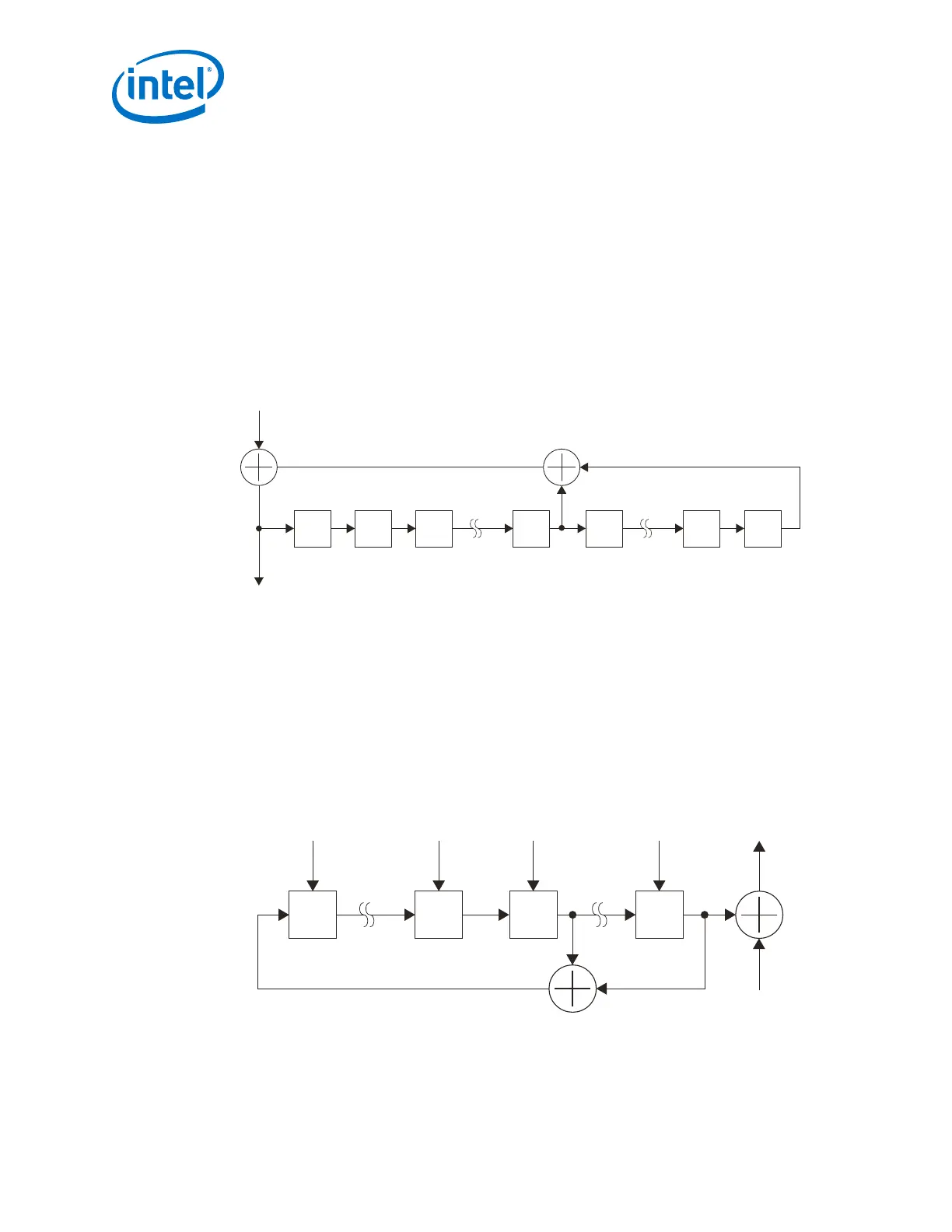5.2.1.6. Scrambler
The scrambler randomizes data to create transitions to DC-balance the signal and help
CDR circuits. The scrambler uses a x
58
+ x
39
+1 polynomial and supports both
synchronous scrambling used for Interlaken and asynchronous (also called self-
synchronized) scrambling used for the 10GBASE-R protocol.
The asynchronous (self-synchronizing) mode does not require an initialization seed.
Except for the two sync header bits in each 66-bit data block, the entire 64-bit
payload is scrambled by feeding it into a linear feedback shift register (LFSR)
continuously to generate scrambled data while the sync-header bits bypass the
scrambler. The initial seed is set to all 1s. You can change the seed for the 10GBASE-R
protocol using the Native PHY IP Parameter Editor.
Figure 241. Asynchronous Scrambler in Serial Implementation
S0 S1 S38 S39 S56
OUT
IN
S2 S57
In synchronous mode, the scrambler is initially reset to different programmable seeds
on each lane. The scrambler then runs by itself. Its current state is XOR’d with the
data to generate scrambled data. A data checker in the scrambler monitors the data to
determine if it should be scrambled or not. If a synchronization word is found, it is
transmitted without scrambling. If a Scrambler State Word is detected, the current
scramble state is written into the 58-bit scramble state field in the Scrambler State
Word and sent over the link. The receiver uses this scramble state to synchronize the
descrambler. The seed is automatically set for Interlaken protocol.
Figure 242. Synchronous Scrambler Showing Different Programmable Seeds
37 38 570
IN
OUT
LFSR Seed
S0 S37 S38 S57
5. Arria 10 Transceiver PHY Architecture
UG-01143 | 2018.06.15
Intel
®
Arria
®
10 Transceiver PHY User Guide
468

